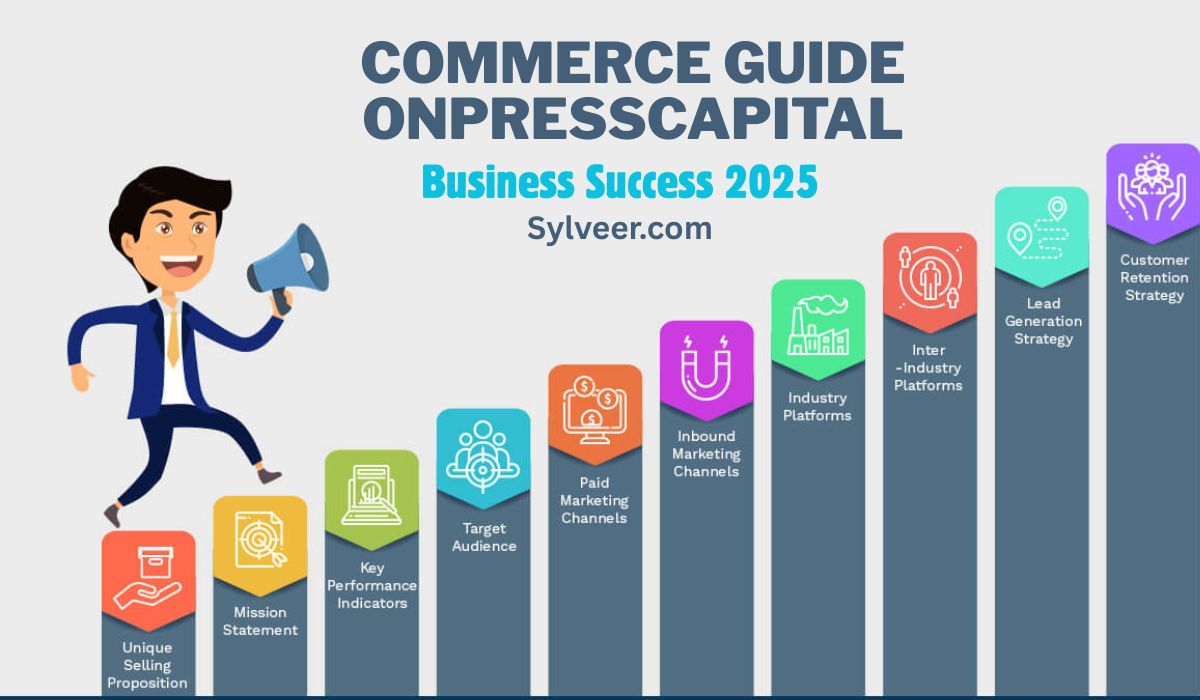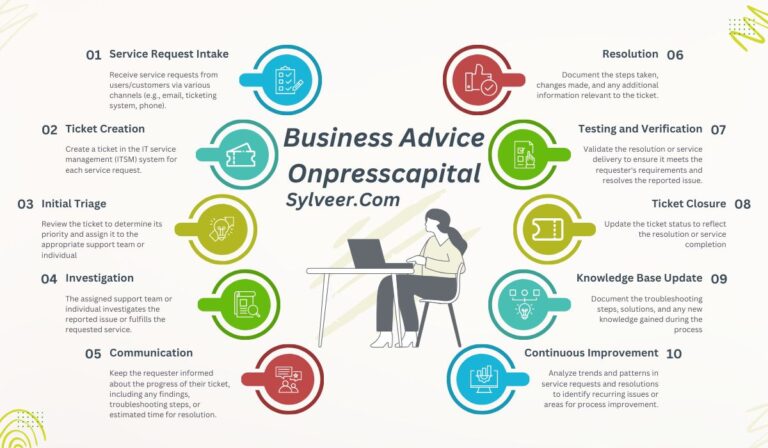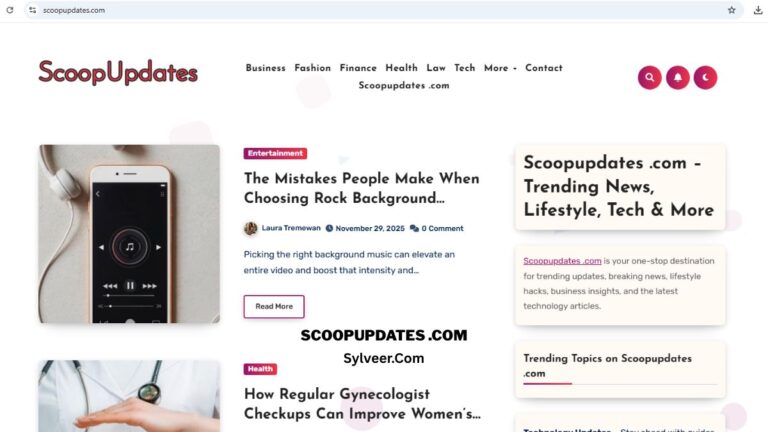
In today’s fast-paced business world, navigating commerce can be overwhelming, especially for startups and small businesses trying to break into competitive markets. That’s where the commerce guide OnPressCapital becomes essential. It isn’t just about learning how to buy and sell products; it’s about understanding strategies, tools, and principles that help companies grow, manage risks, and remain sustainable.
This guide aims to simplify commerce for entrepreneurs, providing insights into what commerce really means in the modern age, why OnPressCapital’s approach matters, and how businesses can leverage it to stay ahead of the curve. Whether you are running an online store, a service-based company, or a traditional retail outlet, this guide will give you the foundation to succeed.
What Is the Commerce Guide OnPressCapital?
The commerce guide OnPressCapital is essentially a roadmap for businesses that want to navigate the complex world of trade, finance, and customer relationships. Unlike generic business advice, it emphasizes real-world practices, data-driven decision-making, and digital-first strategies.
At its core, the guide focuses on three pillars:
- Market Understanding – Identifying opportunities and consumer demands.
- Financial Planning – Managing cash flow, investments, and risks effectively.
- Growth Execution – Scaling operations while maintaining customer satisfaction.
This approach makes it particularly valuable for entrepreneurs who don’t just want to survive but thrive in the marketplace.
Why OnPressCapital’s Commerce Guide Matters Today
Commerce has transformed drastically in the past decade. According to Statista, global e-commerce sales are projected to surpass $7.9 trillion by 2030, with small businesses being the fastest-growing contributors. In this context, a commerce guide like OnPressCapital provides structured insights that help businesses compete not only locally but globally.
Here’s why it matters now more than ever:
- Digital-first economy – Consumers increasingly shop online, requiring businesses to adapt quickly.
- Increased competition – Markets are saturated, making strategic planning crucial.
- Financial uncertainty – Economic shifts demand strong financial literacy and risk management.
- Customer-centricity – Businesses that fail to focus on customer experience risk being replaced.
By following the OnPressCapital approach, entrepreneurs can tackle these challenges strategically instead of reactively.
Key Elements of the Commerce Guide OnPressCapital
1. Understanding Market Trends
One of the most important lessons is knowing where your market is headed. This isn’t just about studying competitors—it’s about analyzing consumer behavior, emerging technologies, and industry disruptions.
For example, businesses that anticipated the rise of mobile shopping early were able to build apps and mobile-friendly stores, giving them a competitive edge. OnPressCapital emphasizes tools like market research platforms, consumer surveys, and data analytics to stay ahead of trends.
2. Financial Management and Capital Allocation
No matter how great your product or service is, without smart money management, success will be short-lived. The commerce guide OnPressCapital teaches entrepreneurs how to:
- Budget effectively for growth.
- Diversify investments to reduce risks.
- Manage debt without crippling the business.
- Understand funding options, from venture capital to crowdfunding.
Financial discipline isn’t about cutting costs blindly—it’s about making strategic decisions that fuel growth.
3. Building a Customer-Centric Business
Modern commerce is no longer product-driven but experience-driven. Customers expect personalization, convenience, and transparency. OnPressCapital encourages businesses to create strong relationships with customers by:
- Offering seamless digital and in-store experiences.
- Using CRM (Customer Relationship Management) tools.
- Prioritizing customer service and feedback loops.
Brands like Amazon and Apple thrive because they don’t just sell products—they create ecosystems that customers trust and return to.
4. Embracing Digital Transformation
Digital tools are no longer optional—they’re the backbone of commerce. The guide emphasizes adopting technologies such as:
- E-commerce platforms like Shopify, WooCommerce, or Magento.
- Automation tools for inventory and marketing.
- Data analytics to track performance and optimize strategies.
- AI-driven personalization to improve customer targeting.
Businesses that resist digital adoption often struggle to compete, while those who embrace it scale faster and more sustainably.
5. Sustainable and Ethical Commerce
Another unique focus of OnPressCapital is sustainability. With growing consumer awareness around ethical practices, businesses that prioritize eco-friendly production, fair wages, and transparent sourcing are gaining customer loyalty.
Sustainability isn’t just good ethics—it’s good business. According to Nielsen, 73% of global consumers are willing to change their consumption habits to reduce environmental impact.
How to Apply the Commerce Guide OnPressCapital to Your Business
- Audit Your Current Position – Start by assessing your financial health, customer base, and market position.
- Set SMART Goals – Specific, Measurable, Achievable, Relevant, and Time-bound goals keep you focused.
- Adopt a Growth Mindset – Be willing to pivot strategies based on market shifts.
- Invest in People and Technology – Your team and digital tools are your strongest assets.
- Track and Measure Progress – Use KPIs (Key Performance Indicators) to know what’s working and what’s not.
Real-World Example: Applying OnPressCapital Principles
Consider a small clothing brand that started with a physical shop. By applying commerce guide OnPressCapital principles, they shifted to an online-first approach, optimized their supply chain, and used customer data to personalize marketing. Within two years, they tripled sales, cut costs by 20%, and expanded globally.
This proves the guide is not theory—it’s actionable advice.
Conclusion
The commerce guide OnPressCapital isn’t just for big corporations—it’s equally vital for startups, freelancers, and small businesses. It provides clarity in a crowded marketplace, equips businesses with tools to manage finances, and stresses customer-centric strategies.
By applying these principles, businesses can move from survival mode to growth mode. In a world where markets evolve daily, having a roadmap like this isn’t just helpful—it’s essential.
FAQs: Commerce Guide OnPressCapital
1. What is the commerce guide OnPressCapital about?
It’s a roadmap for businesses that want to master market trends, financial management, digital transformation, and customer-focused growth strategies.
2. Why is the commerce guide OnPressCapital important for small businesses?
Small businesses often lack structured strategies. This guide helps them manage resources, adopt digital tools, and compete with larger players effectively.
3. How can entrepreneurs apply the OnPressCapital commerce guide?
By auditing their current business, setting realistic goals, investing in technology, and focusing on customer experience, entrepreneurs can align with the guide’s principles.
4. Does the commerce guide OnPressCapital focus only on online businesses?
No, it applies to both online and offline businesses. However, it strongly emphasizes digital adoption since modern commerce is increasingly digital-first.
5. Can the OnPressCapital commerce guide help with financial planning?
Yes. It provides insights on budgeting, funding, risk management, and investment strategies tailored for sustainable growth.
6. Is sustainability included in the commerce guide OnPressCapital?
Absolutely. The guide highlights eco-friendly and ethical business practices as essential for long-term success and customer loyalty.
7. Where can I start with the OnPressCapital commerce guide?
Begin by assessing your market position, analyzing customer needs, and adopting digital tools that align with your growth strategy.







